A Cure for the Common WORD
K.D. Sullivan


Copyright 2008 by K.D. Sullivan. All rights reserved. Except as permitted under the United States Copyright Act of 1976, no part of this publication may be reproduced or distributed in any form or by any means, or stored in a database or retrieval system, without the prior written permission of the publisher. ISBN: 978-0-07-159515-5 MHID: 0-07-159515-5 The material in this eBook also appears in the print version of this title: ISBN: 978-0-07-149330-7, MHID: 0-07-149330-1.
All trademarks are trademarks of their respective owners. Rather than put a trademark symbol after every occurrence of a trademarked name, we use names in an editorial fashion only, and to the benefit of the trademark owner, with no intention of infringement of the trademark. Where such designations appear in this book, they have been printed with initial caps. McGraw-Hill eBooks are available at special quantity discounts to use as premiums and sales promotions, or for use in corporate training programs. To contact a representative please e-mail us at bulksales@mcgraw-hill.com. (McGraw-Hill) and its licensors reserve all rights in and to the work. (McGraw-Hill) and its licensors reserve all rights in and to the work.
Use of this work is subject to these terms. Except as permitted under the Copyright Act of 1976 and the right to store and retrieve one copy of the work, you may not decompile, disassemble, reverse engineer, reproduce, modify, create derivative works based upon, transmit, distribute, disseminate, sell, publish or sublicense the work or any part of it without McGraw-Hills prior consent. You may use the work for your own noncommercial and personal use; any other use of the work is strictly prohibited. Your right to use the work may be terminated if you fail to comply with these terms. THE WORK IS PROVIDED AS IS. McGRAW-HILL AND ITS LICENSORS MAKE NO GUARANTEES OR WARRANTIES AS TO THE ACCURACY, ADEQUACY OR COMPLETENESS OF OR RESULTS TO BE OBTAINED FROM USING THE WORK, INCLUDING ANY INFORMATION THAT CAN BE ACCESSED THROUGH THE WORK VIA HYPERLINK OR OTHERWISE, AND EXPRESSLY DISCLAIM ANY WARRANTY, EXPRESS OR IMPLIED, INCLUDING BUT NOT LIMITED TO IMPLIED WARRANTIES OF MERCHANTABILITY OR FITNESS FOR A PARTICULAR PURPOSE.
McGraw-Hill and its licensors do not warrant or guarantee that the functions contained in the work will meet your requirements or that its operation will be uninterrupted or error free. Neither McGraw-Hill nor its licensors shall be liable to you or anyone else for any inaccuracy, error or omission, regardless of cause, in the work or for any damages resulting therefrom. McGraw-Hill has no responsibility for the content of any information accessed through the work. Under no circumstances shall McGraw-Hill and/or its licensors be liable for any indirect, incidental, special, punitive, consequential or similar damages that result from the use of or inability to use the work, even if any of them has been advised of the possibility of such damages. This limitation of liability shall apply to any claim or cause whatsoever whether such claim or cause arises in contract, tort or otherwise.
Contents
Introduction
Im reading a very interesting book.
Can you tell from the preceding sentence exactly what I mean by interesting? Not really. But what if I say, Im reading a very helpful book or Im reading a very comprehensive book? By changing just one word in this sentence to a more specific word, I convey a different meaning and give you more information about what I want to say. Thats the goal of A Cure for the Common Wordto help you learn to more precisely convey your intended meaning when you write and when you speak. Many of us tend to use the same words over and over. Even though it is estimated that the average person knows more than twenty thousand words, he or she uses only about 10 percent of those in daily life. Often its out of habit or because its easier to use the same old words, but sometimes its because we dont fully understand the nuance of some alternative words or when it might be appropriateand more powerfulto use them.
Granted, sometimes a vague or ambiguous word is just what you wantfor example, when you are being discreet or want to leave your words open to interpretation. For example, if friends set you up on a less-than-stellar blind date, you can gracefully get out of giving a negative opinion by vaguely describing your date as a nice guy. If you do want to be specific, then by expanding your repertoire of words, when you write and speak you will be able to use the most precise word for your meaning, not just the first word that comes to mind. And by using these more precise words, you will be able to communicate exactly what you mean and will do so in a quick and concise manner. Using the same example of our blind dateand assuming this time that the date with Rich was a positive onesee what happens when we use different alternatives for our nice guy?
| Rich has a nice personality. |
| cordial | Rich is warm, sincere, and friendly. |
| cultured | Rich is refined in his manner and enlightened and knowledgeable in the arts. |
| gentle | Rich is never severe or harsh in any way. |
| gracious | Rich is kind and courteous and has a compassionate nature. |
A Cure for the Common Word is for anyone from middle-school age to adult, for those who write and speak in their profession and those eager to improve their vocabulary to be more effective in what they say.
A Cure for the Common Word is for anyone from middle-school age to adult, for those who write and speak in their profession and those eager to improve their vocabulary to be more effective in what they say.
For example, did you know that in the preceding sentence, eager is exactly the right word, rather than anxious, which many people would have used? Thats because eager means having or showing keen interest or intense desire, whereas anxious means uneasy and apprehensive about an uncertain event.
How to Use This Book
This book includes one hundred of the most commonly overused words in the English language, based on research from several sources. Because these common words can often be vague, limiting, or confusing in a sentence, well show you how choosing specific alternatives to these common words helps you to more precisely convey your intended meaning. Before we describe the elements of this book, lets take a brief look at the definitions of a few terms used throughout the book:
connotationthe associated or secondary meaning of a word or an expression in addition to its explicit or primary meaning
definitiona statement of the meaning of a word, phrase, or term, as in a dictionary entry
impressiona strong effect produced on the intellect, feelings, conscience, etc.
meaningwhat is intended to be, or actually is, expressed or indicated
nuancea subtle difference or distinction in expression, meaning, response, etc. Each of these refers to going beyond the definition of a word, to the subtleties of what you meanor what is perceived.
Now a guide to help you with the symptoms of and cures for the common words in this book. A number of elements are associated with each of the one hundred common words in this book. The following descriptions will help you gain the most use of the alternatives offered in this book. On each left-hand page, youll see


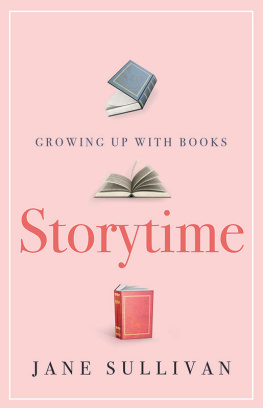
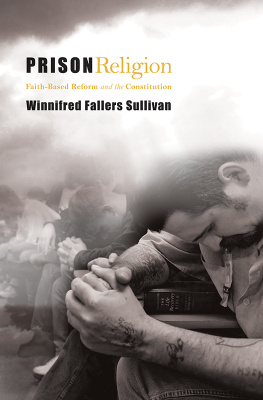
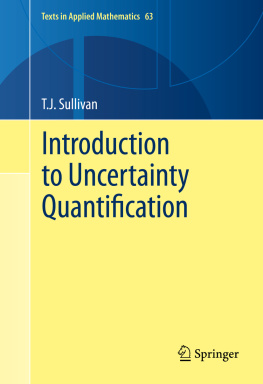


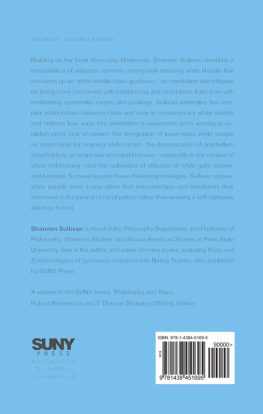


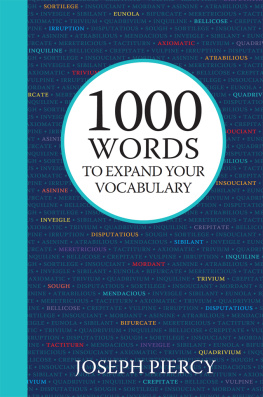
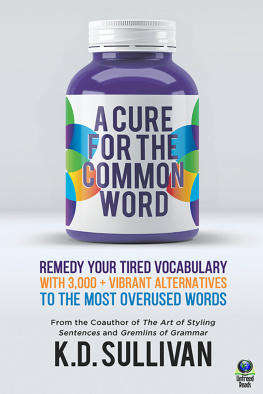
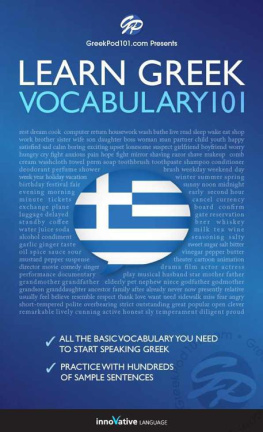

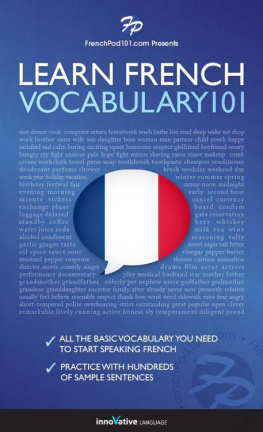
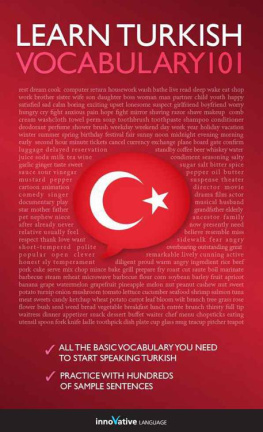

 Copyright 2008 by K.D. Sullivan. All rights reserved. Except as permitted under the United States Copyright Act of 1976, no part of this publication may be reproduced or distributed in any form or by any means, or stored in a database or retrieval system, without the prior written permission of the publisher. ISBN: 978-0-07-159515-5 MHID: 0-07-159515-5 The material in this eBook also appears in the print version of this title: ISBN: 978-0-07-149330-7, MHID: 0-07-149330-1.
Copyright 2008 by K.D. Sullivan. All rights reserved. Except as permitted under the United States Copyright Act of 1976, no part of this publication may be reproduced or distributed in any form or by any means, or stored in a database or retrieval system, without the prior written permission of the publisher. ISBN: 978-0-07-159515-5 MHID: 0-07-159515-5 The material in this eBook also appears in the print version of this title: ISBN: 978-0-07-149330-7, MHID: 0-07-149330-1.